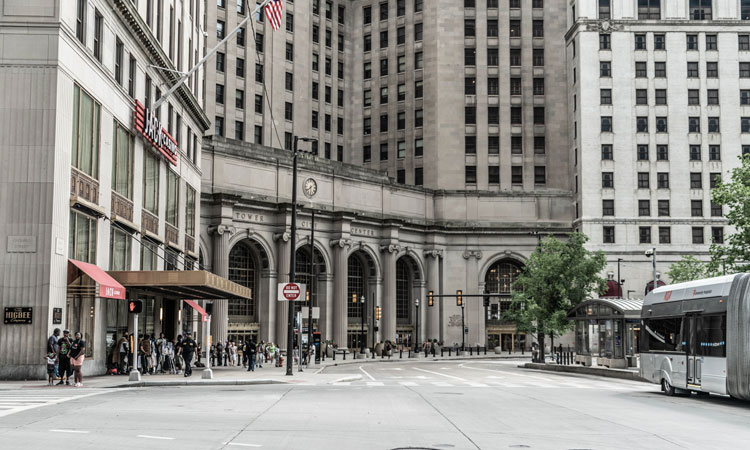Fares fair: Making ticketing simple and equitable in the U.S.
- Like
- Digg
- Del
- Tumblr
- VKontakte
- Buffer
- Love This
- Odnoklassniki
- Meneame
- Blogger
- Amazon
- Yahoo Mail
- Gmail
- AOL
- Newsvine
- HackerNews
- Evernote
- MySpace
- Mail.ru
- Viadeo
- Line
- Comments
- Yummly
- SMS
- Viber
- Telegram
- Subscribe
- Skype
- Facebook Messenger
- Kakao
- LiveJournal
- Yammer
- Edgar
- Fintel
- Mix
- Instapaper
- Copy Link
Posted: 1 November 2021 | Katherine Conrad - NEORide | No comments yet
Simple, fair and accessible ticketing solutions can be a dealbreaker for many when it comes to whether or not to use public transport. Here, Katherine Conrad, Director of Client Services at NEORide, explains how EZfare is creating a simple, but equitable, fare system in the U.S.


In just under two years, EZfare has expanded rapidly to include three states (Ohio, Michigan and Kentucky), 14 transit agencies and three national partners – Transit, Moovit and Uber. As a result, EZfare and its partner agencies have sold over $2.5 million worth of transit passes. So, how did this happen?
One simple word: coordination. EZfare, run by a Council of Governments called NEORide, came together to provide a simple, easy to navigate fare payment service that could be used across multiple counties and regions. Transit agencies have been able to leverage their collective buying power to procure a low-cost, high-quality mobile ticketing platform to the region that is utilised by systems ranging from small rural to large urban.
By partnering with Masabi, a leading international mobile ticketing provider, Mobility‑as‑a-Service has become a reality. Passengers have access to an account-based fare collection system for multiple transit agencies eliminating the need to carry cash or purchase tickets/passes at various locations. Passengers can pay for tickets using a credit or debit card, or via various digital wallets. Tickets are then stored in the app’s secure ‘ticket wallet’. The system is designed specifically with public transit passengers in mind, meaning once a ticket is purchased it is available even without an internet connection, so riders are always able to travel.
Partner transit agencies have their own central back office to track ticket sales, access revenue reports, set rider type, amend fares and manage customer service requests. Third-party accounts can also be created for universities, social service agencies and employers to manage the distribution of transit passes.
Combining trip-planning with easy ticketing
To further enhance the rider experience, EZfare integrated with other national with MaaS apps – Moovit, Transit and Uber – that combine mobile ticketing and real-time trip planning. The goal is to allow consumers to choose their app preference while still allowing them easy access to public transit. By doing so, they created a ticketing platform that removed the need for passengers to carry cash or stand in line at multiple transit stations to purchase different fares.
Recently, Cleveland State University conducted a survey of EZfare users across multiple transit systems. Survey results indicated that over 95 per cent of users agree that EZfare has made it easier and faster to purchase fares. The survey also looked at how COVID-19 has affected passenger travel and concerns. Over 43 per cent of riders confirmed that they were either moderately or extremely concerned by catching COVID-19 from other passengers. In addition, trips taken reduced by one third, reinforcing the reduced ridership we have seen across the U.S. This information only strengthened the argument for a contactless payment system.
Creating equitable ticketing systems
Through an FTA IMI Grant, NEORide/EZfare is working to expand its platform over the next few years to ensure that low-income, unbanked, underbanked and disabled users have access to contactless payment. This need has been highlighted by more than 15 per cent of transit users surveyed identifying as being unbanked or underbanked, and almost 27 per cent identifying as having accessibility needs. The grant (also partially funded by the Ohio Department of Transportation) is funding the addition of validators onto buses, stored value, fare capping, smartcards and integration with retailers and other third-party transportation providers.
Multiple agencies in the EZfare system have already launched ‘Just Ride’ or VAL-100 Validators across their fleet. The validators allow a contactless validation/ payment system that is low cost to transit providers. Validators allow passengers to use the EZfare system by scanning a barcode on their mobile device (and soon EZfare smartcards) to pay their fare. This new technology improves the speed of boarding the bus, reduces the demands on operators and allows integration with other payment options including college passes. Some transit providers in the EZfare system are considering these validators as a potential way to remove the need for expensive fare boxes and cash handling procedures.
EZfare users will soon have the ability to load cash or funds onto their EZfare Account to use for future ticket purchases. These funds can be loaded in cash at any transit centre or via the app with the use of a credit card. EZfare is also exploring the option of partnering with retail locations for the ability to load cash at store locations.
By 2022, riders without access to a smartphone will have the ability to purchase smartcards. Each card will be usable across all 14 EZfare agencies. Cards will be issued by transit providers, partner social service agencies, or ticket vending machines (TVM). Riders can then choose to reload cash at any time at these same locations. Fare capping will also be available among most agencies, therefore removing the need to purchase multiple tickets for different transit agencies or decisions over what type of pass will provide the best value. Instead, each rider with an EZfare app (including partner MaaS apps) or a smartcard can simply tap any validator and ride all day. The Masabi system will then calculate the lowest cost option for that day or month and charge the user accordingly.
EZfare hopes to change the way transit users look at public transit from single entities to a regional system that provides them the access they need to work, reach medical appointments and other destinations. This system will continue to grow as we add additional agencies and modes of transportation – such as bike‑share and microtransit – and new technology such as EMV integration are added. By any measure, EZfare has been a success and will continue to grow, adapt, and change with new technology.


Related topics
COVID-19, Mobility Services, Passenger Experience, Ticketing & Payments
Issue
Issue 2 2021
Related modes
Bus & Coach
Related cities
United States of America
Related organisations
Cleveland State University, Masabi, Moovit, NEORide, Ohio Department of Transportation (ODOT), Ohio Transit Risk Pool, Transit, Uber
Related people
Katherine Conrad








